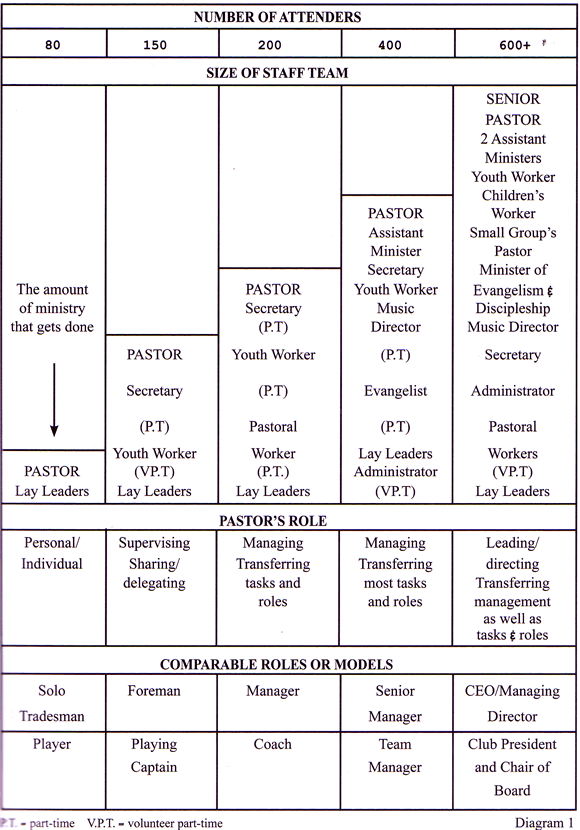by Peter Corney
(This article originally appeared in Essentials: The Journal of EFAC* it has recently been revised 11/09)
We are living in a time of enormous and rapid change at every level of our lives. Hugh Mackay in his book Re-inventing Australia describes it as the Age of Redefinition. The church is not immune to this change. The Anglican Church of Australia (ACA) is, along with the rest of society, experiencing profound changes. Experiments with new congregational models following the Fresh Expressions discussions; the new liturgically minimalist contemporary style of services in many places now; the ordination of women as Presbyters and Bishops; the strains within the Anglican Communion as a result of the willful and heterodox decisions by the American Episcopal Church and the response of splits in ECUSA and a whole new independant N. American diocese formed and the GAFCON conference saying ‘enough is enough’; ageing and declining congregations; many parishes moving below the line of viability; the growth of ethnic congregations; theological challenges from within to fundamental doctrines like the uniqueness of Christ as Savior and Lord; stable parish life threatened by urban mobility and social changes – these are just some of the more obvious changes.
What are Anglican core values?
As we attempt to evaluate, respond and adapt to the pace and extent of change it is essential that we review our foundational principles and theological roots. We need to rediscover our ‘core values’ if we are to respond constructively.
The Constitution of the ACA clearly states in part 1 under the headings “Fundamental Declarations” and “Ruling Principles” that this church has as its fundamental basis: The Nicene and Apostles Creeds; The Bible as “the ultimate rule and standard of faith given by inspiration of God…”; The commands of Christ, including the sacraments of Baptism and Holy Communion; Preserving the three orders of ministry of bishops, priests and deacons; That the doctrine and principles of the Book of Common Prayer (BCP) and the 39 Articles is “the authorised standard of worship and doctrine in this church.” (This includes The Preface and introductions in BCP which contains a number of important principles).
Every ordained minister in the ACA gives assent to these” declarations and principles” . In many dioceses an oath of assent is required before ordination and at inductions as the incumbent of a parish. This is not a matter of indifference, nor is this a legal fiction. Indeed it is a serious and fundamental matter of honesty, integrity and loyalty, and the people whom the ordained ministry is set apart to serve have every right to expect integrity and honesty in these matters.
What are the fundamental principles that stand out in these documents? I believe there are at least seven and I have attempted to summarise them as follows:
1. We are a reformed church
The Book of Common Prayer and the 39 Articles make a clean break with pre-reformation doctrine and practice. (See articles 22, 25, 28 and 31)
Of course, like many Christian denominations we are also heirs of the Church’s prereformation history as well, and like most we have kept some things and left others behind e.g. doctrinally we have kept the three ancient creedal statements; in terms of polity we have maintained the threefold order of Bishops, Presbyters and Deacons; in terms of our corporate worship we have retained some of the ancient prayers. But the principle that determines what is retained is clearly the reformation one as expressed in Article 7 on the creeds. It says that “(they) ought thoroughly to be received and believed: for they may be proved by most certain warrants of Holy Scripture”,
Therefore the first fundamental principle that we are committed to as Anglicans, is that as we change and adapt our polity (church government) and organisation, our ministry, the shape of our congregations, our methods, our liturgy, to the changing world, the changes must be governed by scripture. The questions we must first ask are not the pragmatic ones but the theological ones. “Is this consistent with the Bible?” “Is the approach contrary to God’s written word?”
Let me give just one example of a pre – Reformation practice that has been re-introduced in some places and that undermines an Anglican and Biblical principle; the Gospel procession. This is usually performed with the following ceremony. All stand and the gospel is carried ceremoniously into the body of the congregation preceded by a Crucifier and accompanied by candle bearers. The book is kissed and read from. Sometimes special music is used before and after the event. Often associated with this is the practice of fairly exclusive preaching from the Gospel readings. Over time this ceremony and practice has the following effect.
(a) In the face of Article 6 it makes a distinction of value between one part of the scripture and another. The importance of the Old Testament and the Epistles is down played.
(b) It undermines the unity of scripture.
(c) It implies that “the Gospel” is not found elsewhere in scripture.
The reformers were very clear that the central theme, the thread of unity that runs through the scripture is Christ. God’s redemption plan begins in Genesis and climaxes in Revelation. It could be argued that if the exegesis of the gospels and the gospel is focused or concentrated anywhere it is in the Epistles.
It is sometimes argued that all this attention focused on the Gospel reading is because we are hearing the words of Christ. But the word made flesh is heard in the voice of the whole Bible as Jesus himself made clear, “Man does not live by bread alone but by every word that comes from the mouth of God” (Matt 4:4). To maintain the unity and authority of scripture all the readings should be treated in the same manner.
It should also be said that the practice in some evangelical churches of reducing the readings to just one or two, or the passage being preached on, is also one that destroys the principle of BCP andCranmar. In time this will reduce peoples knowledge of God’s Word. So one can see how important is liturgical practice.
2. The Bible Is the Supreme Authority in matters of faith and practice (See the constitution of the ACA Part 1, section 2and articles 6, 8, 20 and Homily No 10).
It is common to hear some Anglican leaders describe our approach to authority to be like a “threefold cord”, the three strands being Scripture, Tradition and Reason. It’s a deceptive analogy and its central thought of a balanced equality of the three strands is not the one affirmed by our formularies, which make it quite clear that tradition and reason are subject to God’s word (See Article 34).
While it is true that we need to use our “reason” to read and understand scripture, we should always do so with great humility remembering that our reason is fallen and imperfect and vulnerable to the spirit of our age. Indeed most of the current challenges to fundamental doctrines come about because people have become captive to the world view of the day. The process of reductionism, where the Christian faith is reduced to make it fit what people find plausible or reasonable today, should alert us to the danger of placing our “reason” on the same level as God’s Word. In the end of course the liberal tendency to reductionism is a disaster for the people of God. It renders us incapable of challenging the thought forms of our day and then once married to the spirit of the age we are simply divorced by the next.
The myth of theological liberalism is that it is objective, open and broad-minded; in fact it is usually amazingly intellectually provincial because it has been seduced and captured by the world view of its day.
It’s a kind of “Dior theology” changing and shifting with the intellectual fashions of the day. The contemporary Christian should look carefully at the results of this kind of theology. Examine the churches that are fed stones in place of bread. It’s not a pretty sight they are either terribly emaciated or ready for the body bags.
As indicated above in principle one, the question of what is the controlling authority is crucial for a church in a time of great change and in the midst of a hostile world view.
3. We are a creedal church
We hold to historic orthodoxy in doctrine as expressed in the Apostolic, Nicene and Athanasian Creeds. (See BCP Article 8, and The Constitution of the ACA Part I, section I)
It cannot be too strongly emphasised in our current climate where the process of reductionism is hard at work on the doctrine of the person of Christ that we are a Trinitarian faith. Any reduction in the orthodox teaching about Jesus is in the end an attack upon the doctrine of God. The Athanasian Creed can hardly be described as ambiguous on this matter!
4. Salvation is found In Christ alone (See Articles 2 and 18)
In a pluralist, multi faith society this now becomes a very sensitive issue. It’s the kind of statement that is seen to be politically incorrect. Therefore the pressure of the spirit of the age will be to modify this teaching. There are certainly no grounds for a triumphalist or arrogant presentation of the Gospel. Jesus should always be set forth by us with humility. As D. T. Niles said “like one beggar showing another beggar where to get bread”. There is no place for the mockery of or disrespect for the faith of others. But if we believe Jesus is who he claims to be it is simply a matter of love, obedience and integrity to set forth those claims and call people to respond to them.
This Anglican principle challenges the widespread’ ‘universalism” within the Anglican Church. Some will say, “Yes, salvation is found in Christ alone but in the end, whether people have responded in faith and trust in Jesus Christ now is irrelevant to their ultimate state, for Christ will rescue them, even from their disbelief, unbelief or false belief.”
This approach rejects the c1ear teaching of the New Testament for the need for faith, repentance and baptism. (See Acts 2:38; 2 Thessalonians 1:8-9; Colossians 1:15-23; Matthew 7:13-23.) It also makes a mockery of the church’s baptismal teaching and its initiation liturgies. (See also Articles 9 and 11)
5. Worship in the Christian assembly
In the Christian assembly our formularies commit us to a form of worship and order that is to be directed by the following guidelines:
(a). Its form and order and ceremonies are to be governed by the Word of God (Articles 19 and 20)
(b). It is to be Bible centered. The sheer amount of scripture to be read and sung, its echo in the responses and collects and prayers of Cranmer’s Services make this point so obvious. What may not be so obvious to Anglicans today is the purpose of all this scripture. It is, as the preface says, “to set forth God’s glory” and promote the “edification” of his people.
For those who have seen the church buildings built after the great fire of London (1666), all influenced by these principles, it is very clear that they are auditory buildings and definitely not designed for pre-reformation ceremonies. Most have little or no Sanctuary or Chancel. They are built so everyone can hear, the ministry of the Word is now to be prominent and in balance with the ministry of Sacrament (Note: Christopher Wren (1632-1723) designed 50 churches in the city of London following the great fire of 1666. St James Piccadilly is a classic example. Others followed Wren’s principles, St Mary in the Strand; St Martin the Fields etc.)
Anglican corporate worship was not intended to be theatre. Drama can be very effectively used to explain God’s word, but the word must remain the focus. It is designed to honor and to glorify God through the Word of God and edify people so they will glorify him by living more godly lives. In the Preface in B.C.P. “Concerning the Services of the Church”, when speaking of the importance of the reading and teaching of God’s word in the Services it says this: “that the people by daily hearing of Holy Scripture read in church might continually profit more and more in the knowledge of God, and be the more inflamed with the love of his true religion”.
(c). A balance of Word and Sacrament The current pattern we have fallen into where the main and often only Sunday Service is the Holy Communion has upset this balance. The level of Bible reading, teaching and reflection has dropped dramatically with a focus only on the Gospels.
(d). Contextualised, in the culture and “the language of the present times”, as it is expressed in the Preface to B.C.P. (See also Articles 20, 24, 34) This is one of the principles that produced the B.C.P.
This means that Anglican patterns of worship need not be monochrome or static. In fact the briefest glance at our history will show that there has never really been one Anglican style or ethos of worship. There have in fact been many styles. This guideline also allows for flexibility from place to place. In the modern city, the culture and style of one suburb can be vastly different from another. A greater flexibility of worship styles is essential if we are to be relevant and effective today.
(e). Traditions are variable. This guideline supports (d) above. In the B.C.P. Preface “Of Ceremonies” it says very clearly that “Christ’s Gospel is not a ceremonial law…. but it is a religion to serve God, not in bondage of the figure or shadow but in the freedom of the Spirit”. Articles 20 and 34 makes it quite clear that the church has authority to change its practices as long as practice expresses the truth of God’s word. Preserving tradition for tradition’s sake is not an Anglican principle.
(f). Participatory and orderly. There should be a balance between freedom and form or as the Preface puts it between “stiffness” and “easiness”.
6. The local congregation is the primary base for mission
Article 19 describes the essential characteristics of the local congregation. The primary task of any Diocesan organisation should be to support the local congregation in its mission.
7. Authorised ministry
It is an Anglican principle that our ministries be publicly set apart and authorised. (Article 23) The life and ministry of such is to be “shaped” by Holy Scripture (The ordinal BCP)
Conclusion
There are of course many things that our formularies do not speak about for historical reasons, e.g. the relationship between public worship and evangelism in a post Christian society. Nevertheless on the basis of the above principles we have great flexibility to design new approaches to meet the needs of today. The “Fresh expressions” move at General Synod level is a small but encouraging sign. There are also a few creative experiments being encouraged. But the attitude of many Bishops to these is still one of benign tolerance of something that is not quite Anglican!
The big question is whether our leadership, our legal, governing and administrative structures will become more flexible and imaginative and used to facilitate creativity, mission and growth or used to control and conform to the past. Will our institutional structures be used to set the strategic horizons and facilitate the resources for mission, growth and creativity and effective performance or will they be pre-occupied with maintenance and survival? If it is the latter we are in for a painful institutional death.
In many Dioceses the majority of congregations are now small and the average age over 60 years of age, frequently locked in a liturgical and ecclesial nostalgia with little energy for or skill in outreach. These congregations are generally conservative and not open to major change. Diocesan leaders are in a Catch 22, if they push radical change they fear they may loose the remnant that’s left. But, apart from a slow death, there is really no other option but to develop strategic plans for change and new initiatives and for selecting and training a new brand of clergy who have a Gospel passion, initiative, leadership and entrepreneurial skills. Using the principles outlined above we could see a new era of culturally relevant, vital, Reformed Anglican churches reaching today’s Australians with the Gospel.
* EFAC – The Evangelical Fellowship in the Anglican Communion (Australia)
P.Corney (Revised 11/09)






